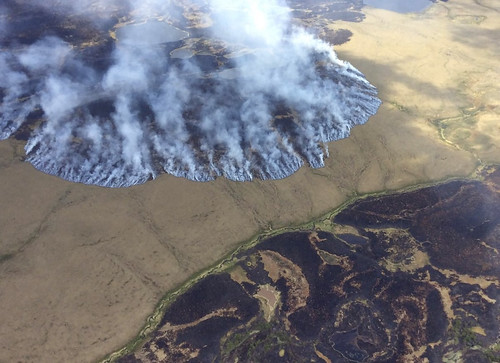
You don’t have to be a rocket scientist to know that wildfires are more common during hot, dry summers. The area burned in the United States in 2015, over 10 million acres, according to the National Interagency Fire Center, occurred during a record temperature year for the Earth, plus record low snowpack and rainfall in some areas of the West.
The sizzling weather of 2015 was similar to what global climate models project for the year 2060. Last year’s weather and fire may become the new normal later in the 21st century.
A warmer climate is expected to increase the frequency and severity of fires. Historically, fires most often occur in the western U.S., as well as the boreal forest and tundra of Alaska. Current models predict that two to three times more area will burn annually in the West by 2050. This is a significant change in how wildfire will affect ecological systems and human communities in the future.
A longer fire season and bigger fires in Alaska would have a significant effect on the global carbon cycle. Organic soils in boreal forests and tundra contain up to 30 percent of the Earth’s terrestrial carbon, which can be released to the atmosphere by intense wildfires that burn deep into the soil. Temperature is increasing fastest at northern latitudes, thus increasing opportunities for wildfire to occur.
Foresters manage fuels to reduce fire intensity, vegetation mortality and damage to structures. In the Southeastern U.S., most pine forests are treated with prescribed fire every few years, keeping surface fuels and tree densities low to reduce the risk of fire. Forest thinning, prescribed fire and other means of fuel removal reduce fire intensity in dry forests in the western U.S.
Increasing temperatures coupled with increased wildfire will create new ecological and social challenges for federal resource managers. Warmer temperatures increase the complexity of conservation in terrestrial and aquatic ecosystems, threaten homes in the wildland-urban interface, and make the task of fire suppression even more costly.
By identifying “hot spots” where future wildfire may be especially pervasive and damaging to resources, the U.S. Forest Service and other federal agencies are developing adaptation options and locations where fuel treatments can be prioritized. They are also working with local communities to ensure that residents are prepared to live in areas where fire hazard is high.
